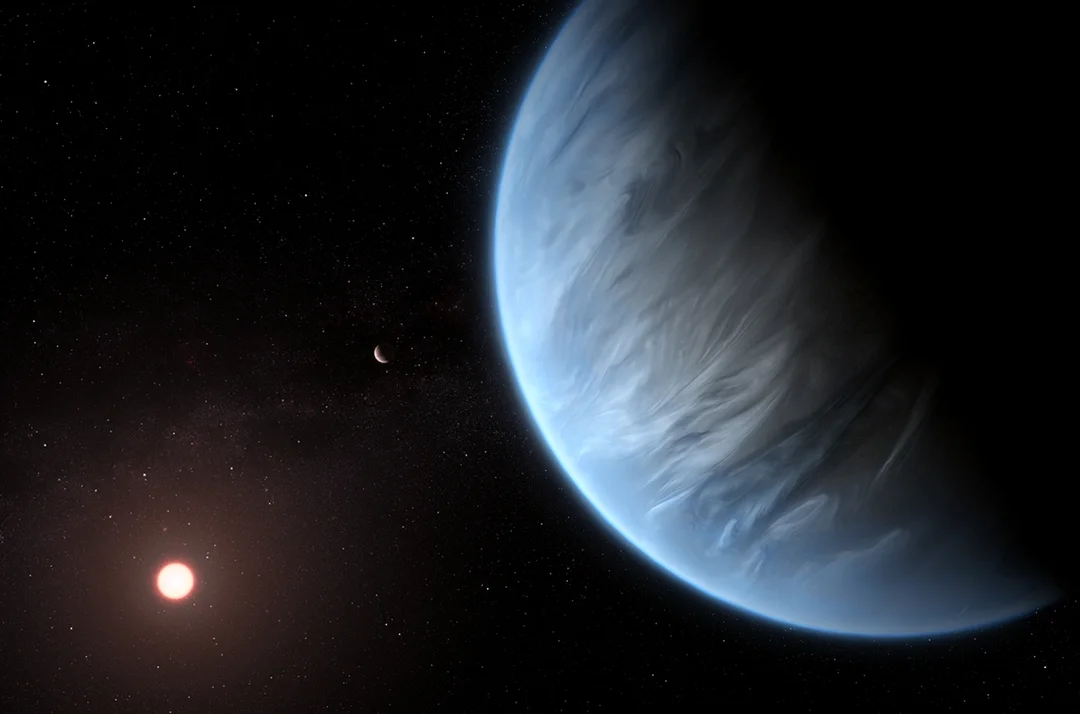
Is There Life on K2-18b? Scientists Debate Evidence of Extraterrestrial Life
The search for extraterrestrial life is one of humanity's most enduring quests. Recently, the claim of detecting dimethyl sulfide (DMS), a gas produced by marine bacteria on Earth, in the atmosphere of exoplanet K2-18b sparked immense excitement. However, the scientific community is now engaged in a vigorous debate, questioning the validity of these findings. Is this the breakthrough we've been waiting for, or is it another false alarm?
A team from the University of Cambridge initially suggested that the presence of DMS in K2-18b's atmosphere could indicate life on the planet, which is located 124 light-years away. This intriguing discovery was based on data from the James Webb Space Telescope (JWST). K2-18b has a radius 2.6 times that of Earth, a mass nearly nine times greater and orbits a star that is 124 light years away, raising the tantalizing possibility of a water-rich world potentially suitable for life.

However, this claim has been met with skepticism. Independent analyses suggest that other non-biological gases, like propyne, can mimic the spectral signature attributed to DMS. Matt Nixon of the University of Maryland argues that when propyne is added to a methane and CO2 atmosphere, the need for DMS disappears. Sara Seager, an astrophysicist at MIT, further emphasizes the uncertainty: "If the [DMS] signal is real, is it attributed to the right gas? The answer to that is no."
Moreover, some scientists question the strength of the signal itself. Jake Taylor of the University of Oxford, in a preprint, states he found no clear statistical evidence for *any* gas in the planet's atmosphere with the new JWST data. Ryan MacDonald, an astrophysicist at the University of Michigan, described the JWST data as "incredibly noisy" and labeled the initial claims as "very irresponsible scientific communication." Extraordinary claims, as Carl Sagan famously said, require extraordinary evidence.

Adding to the complexity, the nature of K2-18b itself is under debate. While initially believed to be a water world, some astronomers suggest it could be a lava world, or even a Neptune-like gas dwarf planet without a surface. A magma ocean or a thick layer of gas and ices would significantly reduce the chances of life as we know it.
The discovery, while potentially revolutionary, underscores the challenges inherent in astrobiology. Interpreting atmospheric composition from light-years away is an arduous task, subject to multiple interpretations and potential false positives. Historical claims of life on Mars and Venus, like the Viking mission's ambiguous results in the 1970s and the phosphine gas detection on Venus in 2020, serve as cautionary tales.
Nikku Madhusudhan from the University of Cambridge stands by his team's findings, asserting they are "seeing those signals." He notes that they initially evaluated 20 gases before narrowing the list. However, the scientific community demands rigorous scrutiny and exploration of all possible abiotic explanations before embracing the possibility of extraterrestrial life.. Despite the controversy surrounding the life claim, K2-18b remains a noteworthy target because it highlights how much further testing, observation and re-evaluation must take place to approach a real understanding of planets outside of our solar system. Additional JWST observations already completed are currently being analyzed.
The K2-18b saga exemplifies the scientific process at its finest – a continuous cycle of discovery, scrutiny, and refinement. While the possibility of life on K2-18b remains tantalizing, the evidence requires further validation.
What do you think? Is K2-18b teeming with life, or are we jumping to conclusions? Share your thoughts in the comments below!